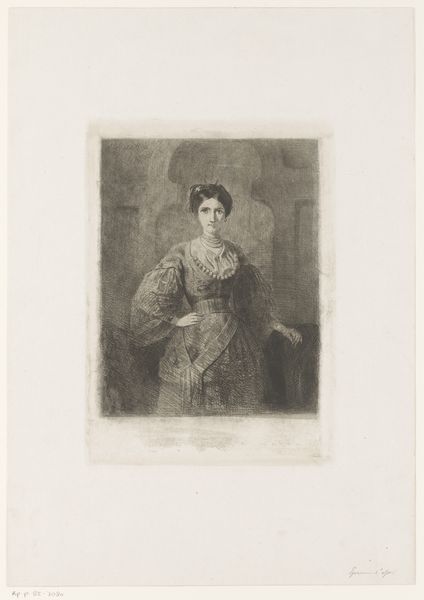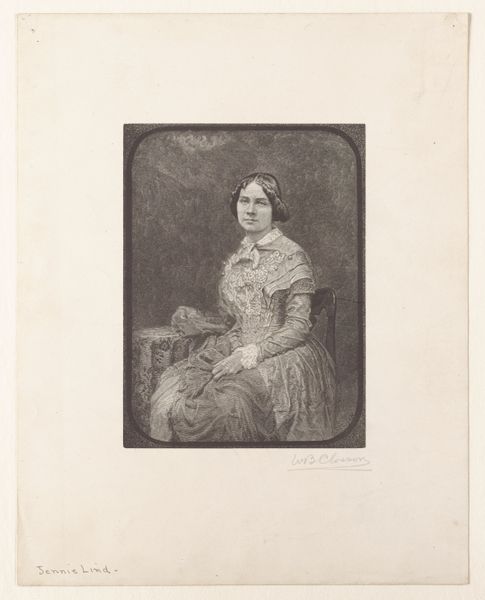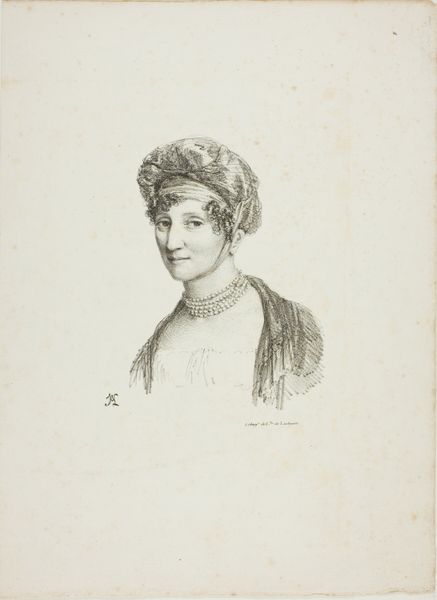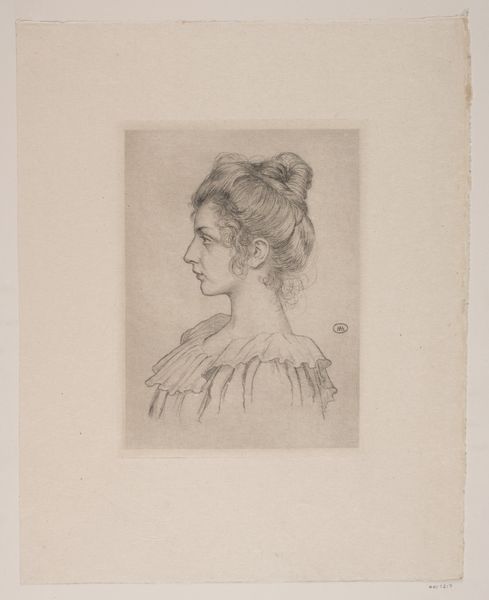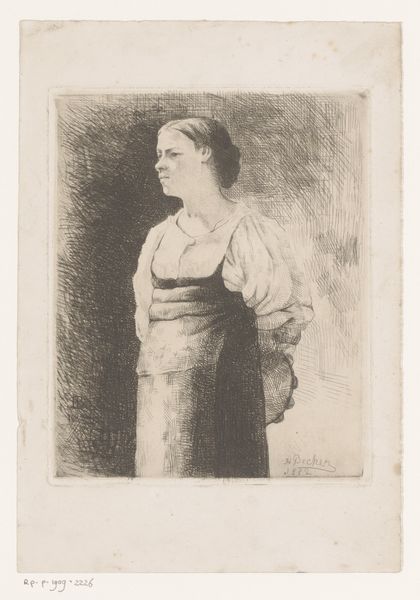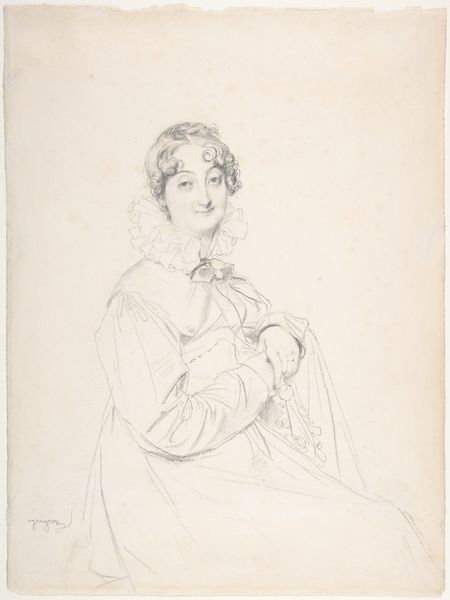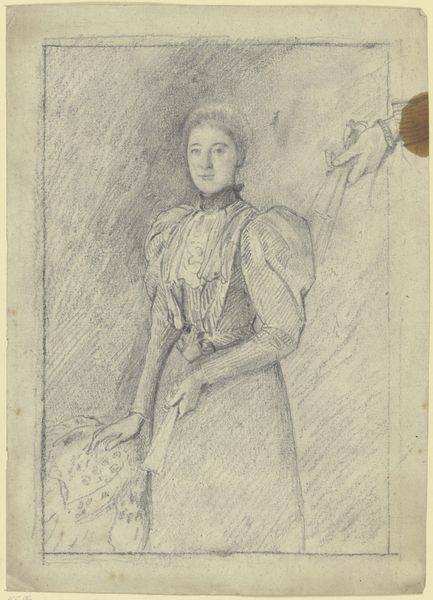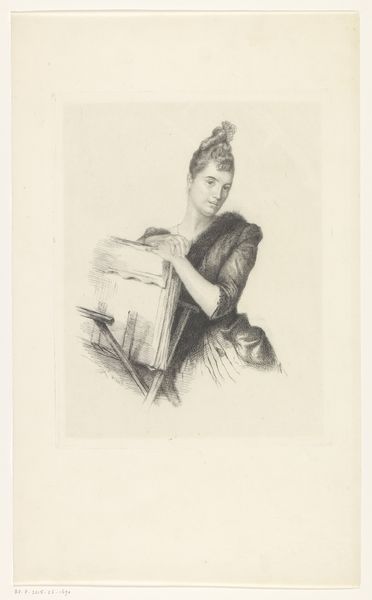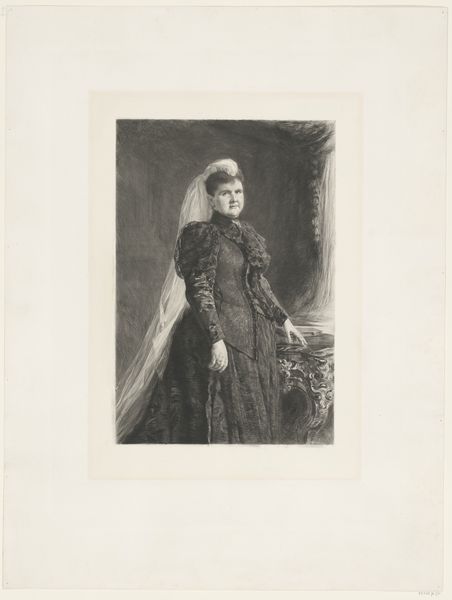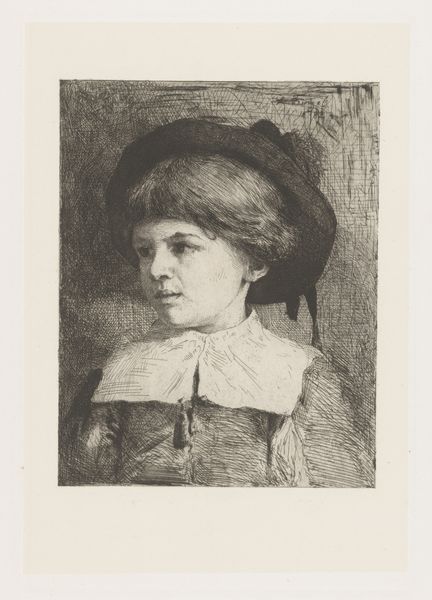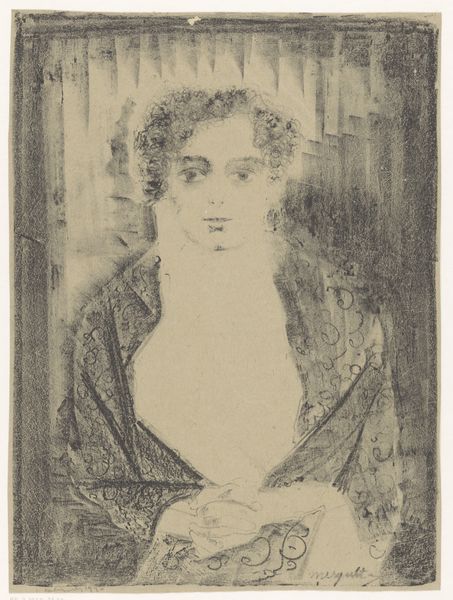
Portret van een onbekende jonge vrouw in Turkse klederdracht 1831 - 1877
0:00
0:00
drawing, etching, pencil
#
portrait
#
pencil drawn
#
drawing
#
etching
#
charcoal drawing
#
figuration
#
pencil drawing
#
pencil
#
realism
Dimensions: height 250 mm, width 182 mm
Copyright: Rijks Museum: Open Domain
Editor: So this is "Portret van een onbekende jonge vrouw in Turkse klederdracht" - Portrait of an unknown young woman in Turkish clothing - it was made sometime between 1831 and 1877 by Adolphe Alexandre Dillens. It's a drawing or etching, so it has a delicate feel. It seems to show the subject adopting an intentional, almost theatrical, pose. What are your thoughts about its potential symbolic relevance? Curator: The theatricality is a vital clue, I think. The "Turkish dress" itself is a symbol, isn't it? It speaks to a European fascination with the Orient – a projection of fantasy and desire onto the "other". Look at how her gaze meets ours directly; it's an assertion of identity within that exoticized context. What does her expression tell you? Editor: She seems very aware of being looked at, perhaps self-conscious, as though she understands the performance she's putting on. It makes me wonder about the politics of representation during that period, of orientalism, how that lens might affect perceptions. Curator: Precisely. The costume is not merely clothing; it's a signifier loaded with cultural assumptions. Think about the power dynamics at play: Who gets to represent whom? What narratives are being reinforced or challenged? And remember, symbols gain their meaning through repeated use, solidifying cultural memory and sometimes, unfortunately, prejudice. Is she Turkish? Does it matter? Editor: I see what you mean, she's not just a woman in a costume, she's a representation of a cultural encounter, however fraught. So her “Turkish dress” becomes less about accurate cultural depiction and more about European desires and fantasies. It raises complex questions about authenticity and cultural appropriation. Curator: Indeed. And those questions still resonate today, don’t they? This image, beyond its aesthetic appeal, acts as a mirror reflecting our ongoing negotiation with identity and representation. We should see art not just as things of beauty, but time capsules laden with intent and symbolism.
Comments
No comments
Be the first to comment and join the conversation on the ultimate creative platform.
